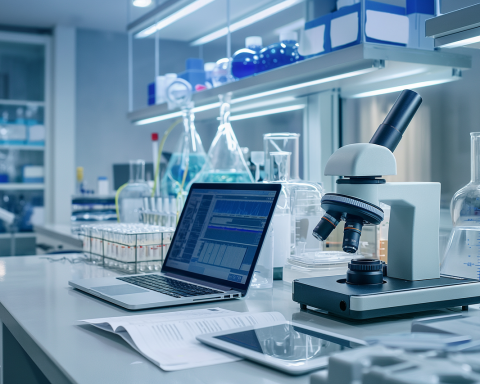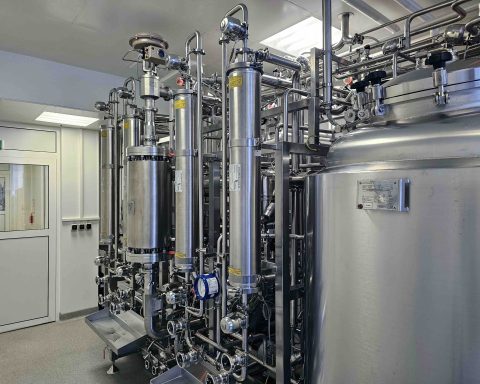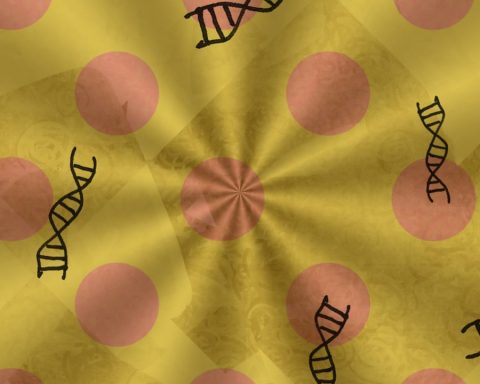Abstract
Innovator Company brings medicinal compound(s) as a blessing to human beings after performing lots of clinical trials on animals and humans. Hence, Innovator Company applies the potential medicinal molecule as an Investigational New Drug (IND) to US FDA legally to test the drug on human subjects. After successful clinical trial on human subjects, Innovator Company submits the drug to US FDA as New Drug Application (NDA) and get patent right. During patent period, Innovator Company distributes the medicinal compound as INN drug to human beings and collects long term clinical data hence declares as safe drug for human beings and includes the drug in BP, EP, USP and other pharmacopeias. After patent period (minimum 10 years), generic company can manufacture the drug containing the identical active chemical ingredient in the same dosage form and strengths as innovator to serve regional human beings. Exceptional, some countries, which are not under patency rules, can manufacture INN drug at the parallel time of innovator. When any generic company submits registration dossier of drug product to US FDA, it is called ANDA (Abbreviated New Drug Application). Now a days registration of a generic drug product to any developed country needs to fulfill lots of requirements. Government health authorities of the countries demand composition declaration, product development history, quality related product specifications, manufacturing direction, analytical test methods, test method validation reports, stability report, packaging design, GMP certificate, quality management certificate(s) from any approved authority, product registration certificate from parent country, etc, additionally DMF (drug master file) of API (Active Pharmaceutical Ingredients), cGMP certificate of API as well as manufacturing facility, FDA approval certificate of API, COS (certificate of suitability) to identify reliable source of bulk API manufacturing company. The government health authority concerns about quality and safety of API that generic companies use in their product. The government health authorities think that quality and safety of drug product depends not only on generic company but also on bulk manufacturing company of API.
Innovator product (NDA)
Researchers are searching medicinal molecules principally from source of plants, animals, bi-products, related impurities and pharmacological actions of discovered drug molecules. After identification of medicinal compounds as well as some relevant biological works of identified drug compounds on animal models, researchers published their works in different journals, known as primary research work. Secondary researchers study on published primary research work and investigate the potentiality as well as manufacturing suitability of medicinal molecules. After that, the researchers or investors apply the potential medicinal molecule as an Investigational New Drug (IND) to US FDA legally to test the drug on human subjects. This IND application is based on pre-clinical data, typically from animal studies, that shows the drug is safe enough to be tested in humans. If the IND is approved by the FDA, the investor or drug company can begin the first phase of development. The IND consists of three phases trail: Phase-1 known as clinical trials using healthy subjects to determine “drug product’s” basic properties, such as the extent of drug absorption, drug absorption rate and its safety profile in humans, Phase-2 known as small-scale toxicology study using animal subjects and then a long-term, small-scale clinical study to assess the product’s efficacy and safety in humans, Phase-3 known as large-scale testing for safety and efficacy conducted in multiple centers among a few hundred to a few thousand patients.
Once Phase-3 is complete, the investor or drug company submits the drug to US FDA as New Drug Application (NDA) in Common Technical Documents (CTD). The NDA describes the manufacturing process, composition, quality & control parameters of the drug substance and drug product, it also provides evidence of its safety and effectiveness to US FDA. If the US FDA usually takes one to two years to review and approve the NDA. During the NDA stage, the US FDA consults advisory committees made of experts to obtain advices on drug safety, effectiveness and labeling. Once FDA approves the drug product, the company can market the drug product with US FDA regulated labeling.
Patent
According to the US FDA, developing a new drug and getting it approved for sale can take approximately 10 years and cost almost $800 million. To encourage companies to make these investments, new brand name drugs are given patent protection for up to 20 years as per investment. By the time a drug gets US FDA approval and reaches the marketplace, the company usually has about 10 years left on the patent. While a medicine is under patent, no other company can sell the same drug. During this period, the brand manufacturer (innovator) has an opportunity to recover the original investment in the drug.
Patent can be for Active Pharmaceutical Ingredient (API)/drug substance and for finished drug product. When the patent of finished drug product expires, other manufacturers can apply for permission to sell the same drug as a generic. During patent period, other manufacturers can not launch the product in market, but innovator company/investors give opportunity to some countries such as Brazil, Africa, India, Nepal, Bangladesh and some other developing countries to manufacture the drug products due to considering their economical condition and in order to get universal demographical clinical data.
Generic product (ANDA)
Generic medicines are copies of brand name drugs (innovator product), containing the identical active chemical ingredient in the same strengths. Before a generic medicine can be made available to the public in USA market, it must go through a rigorous quality control review process to receive approval from the U.S. Food and Drug Administration (FDA). The US FDA reviews each generic to make sure it’s equivalent to the brand name product in effectiveness, safety, active ingredients, performance, strength, dosage forms (tablets, capsules, liquid, creams, etc), and dosage regimen. If any generic company submits dossier to US FDA, then it is called ANDA (Abbreviated New Drug Application) file for US FDA.
Generic company is the company which must manufacture the product similar to brand or innovator company in term of dosage form (tablets, capsules, liquid, creams, etc), active ingredient(s), strength (10mg, 20mg, etc), dosage regimen. Generic company can play with excipients only with interaction study of active-excipients, excipients-excipients if generic company wants to include any new excipients(s) in generic product which brand product does not contain. Generic company generally distributes medicine in regional area and the outside of regional area after getting approval from regional respective government regulatory agency.
Generic product development
Prior to start of development of generic product, generic company should study on R&D, patent expiry, data exclusivity, regulatory affairs, legal country requirements, marketing & sales, finance, etc. Once selected, details of the selected product should be recorded into some kind of document to include information such as: innovator product description and dosage form, innovator product packaging description, innovator product sales, generic product description and dosage form, generic product packaging description, generic sales forecasts, intended manufacturing site, intended production batch size and any other relevant information.
Pre-formulation
Prior to preparing actual trial formulations of generic product, “pre-formulation” work must be performed to obtain as much information about API and the innovator/reference drug product as possible.
Common pre-formulation activities include the following: review of the product selection document, review of any pertinent patent information, obtaining of samples of reference product (innovator product) and packaging, evaluation of physical characteristics of the reference product, determination of reference drug release characteristics through “in-vitro” dissolution profiling, obtaining and review of all available public information about the innovator or “reference” product i.e. PDR, CPS, Merck Index, product labels and inserts, published literature in pharmaceutical and medical journals, etc, characterization of API (drug substance) to determine drug form (i.e. crystalline, powder, amorphous), drug solubility, polymorphism, particle size, bulk density, flow characteristics, chemistry (i.e. pKa, functional groups), drug absorption characteristics (pharmacokinetics), incompatibilities, sensitivities (light, heat, moisture), etc, identification of a discriminating dissolution procedure with relevant in-vitro/in-vivo correlations.
Following these “pre-formulation” activities, decisions can be made about the type of formulation and process to be considered for development of generic product.
Formulation
A generic product formulator must select the same active ingredient, same strength (10mg, 20mg, etc), same dosage form (tablet, capsule, syrup, cream, etc) similar to that of innovator or brand product. It’s better to select almost the same excipients as innovator product contains. Inclusion of new excipients apart from innovator product may require study of excipient-active interaction as well as excipients- excipients interaction. New excipients included in generic product should be listed in GRAS (generally recognized as safe by the Food and Drug Administration of the USA) and approved by EU.
Selection of inactive materials (excipients)
A) Composition of reference product (if available)- PDR, CPS or product labels will often list qualitative composition of formulations, B) Requirement for specific excipient– formulations should start out simple, with additional, specialized excipients being incorporated as needed through experimental trials, C) Drug/Excipient Incompatibilities– Drug characterization and pre-formulation studies may exclude specific excipients due to potential incompatibility or stability issues, D) Excipient characteristics/Affect on drug substance release– Depending on the drug substance, certain excipients may be selected due to their affect at enhancing or retarding the release of the drug substance to produce the desired “in-vitro” dissolution release profile. E) Formulation process– certain excipients are specialized for direct mixing processes whereas others are more suitable for wet granulation processes. F) Availability– Excipients most readily available are usually selected over excipients that may be equally adequate, but not readily available, G) Experience- Formulators usually select excipients with which they have the most experience, even though there may be equivalent excipients to perform the same function, H) Cost– with two functionally equivalent, equally available excipients, the cheaper of the two may be selected.
A generic product formulator quantifies the inactive materials to develop a convenient size and shape of product as well as develops the manufacturing process for solid dosage form, such as sieving, direct mix, dry granulation/ wet granulation, drying, grinding, lubrication, ready granules, compression into tablets or fill into capsule shell.
In-vitro dissolution profile
A generic product formulator adjusts the quantity of excipients and modifies the manufacturing process to match in-vitro dissolution profile of generic product (such as tablet, capsule, etc) with innovator or reference product at these specified media (pH 1.2, buffer pH 4.5, buffer pH 6.8 and purified water). Matching of in-vitro dissolution profile with innovator or reference product is determined by f1 (difference factor) and f2 (similarity factor). If f2 value (similarity factor) calculated from in-vitro dissolution profile of generic product with innovator or reference product is less than 50 and f1 value (difference factor) is more than 15, a generic product formulator must reformulate and modify manufacturing process till to get f2 value more than 50 and f1 value less than 15. The more the f2 value (limit 50-100) and the less the f1 value (limit 0-15) indicates the more matching of in-vitro dissolution profile of generic product with innovator or reference product, which ensures more probability to pass the bioequivalent test.
Once in-vitro dissolution profile is matched, a generic product formulator manufactures a bio-batch (100,000 units), this batch is sent to bio centre which are approved by regulatory bodies for in-vivo bioequivalent testing (> 24 subjects) vs. the reference product. If the product proves to be “bioequivalent” to the reference product or innovator product, a submission package is assembled and submitted to the respective Government Regulatory Agency for review and eventual approval.
NDA vs ANDA
NDA is required for brand name drug (innovator drug) and ANDA is for generic drug for US FDA. NDA’s requirements are chemistry, manufacturing, controls, labeling, testing, animal studies, clinical studies, bioavailability. On the other hand, ANDA’s requirements are chemical, manufacturing, controls, labeling, testing, bioequivalence. Animal studies, clinical studies and bioavailability of NDA are considered as equivalent replacement of bioequivalence for ANDA.
International regulatory
At present when a generic company wants to submit product for registration to EU, US FDA & respective government regulatory agency of developed countries, their government health authorities demand for DMF (drug master file) of API (drug substance), cGMP certificate of API and manufacturing facility, FDA approval certificate of API, COS (certificate of suitability) to identify reliable source of bulk API manufacturing company. The government health authority concerns about quality and safety of API which generic companies use in their product. Quality and safety of drug product depends not only on generic company but also bulk manufacturing company of API.
Authorities of EU, US FDA and respective government regulatory agency of developed countries at present tell generic company to submit registration dossier of any generic product (ANDA) in Common Technical Document (CTD) format whose contents are mentioned in ICH guidelines. Registration Dossier of a generic product in CTD format consists of information sufficient to reflect quality and safety of drug product.
Abbreviation
IND-Investigational New Drug, FDA-Food and Drug Administration, CTD-Common Technical Documents, NDA-New Drug Application, ANDA-Abbreviated New Drug Application, API- Active Pharmaceutical Ingredient, PDR-Physician Desk Reference, CPS- The Compendium of Pharmaceuticals and Specialties, GRAS-Generally recognized as safe by the Food and Drug Administration of the USA, R&D-Research & Development, EU- European Union, DMF-Drug Master File, cGMP-Current Good Manufacturing Practice, COS-Certificate of suitability, ICH-The International Conference on Harmonisation.








